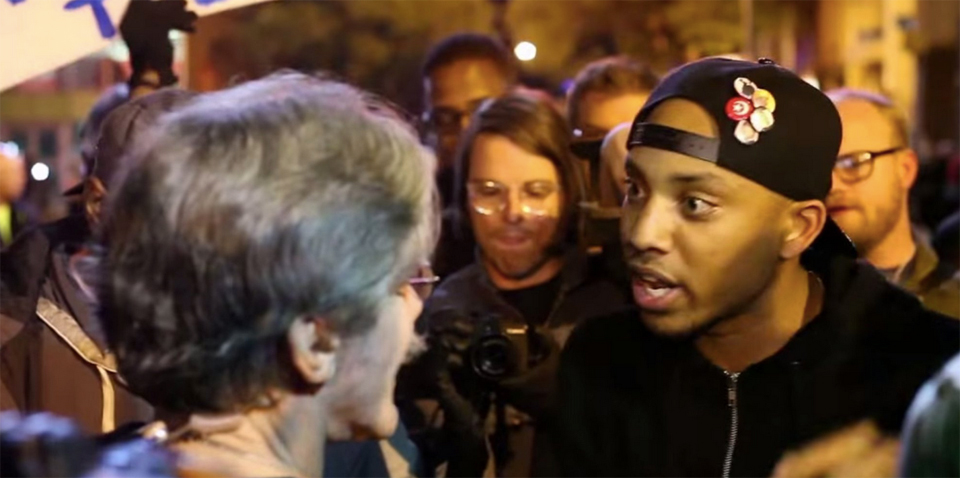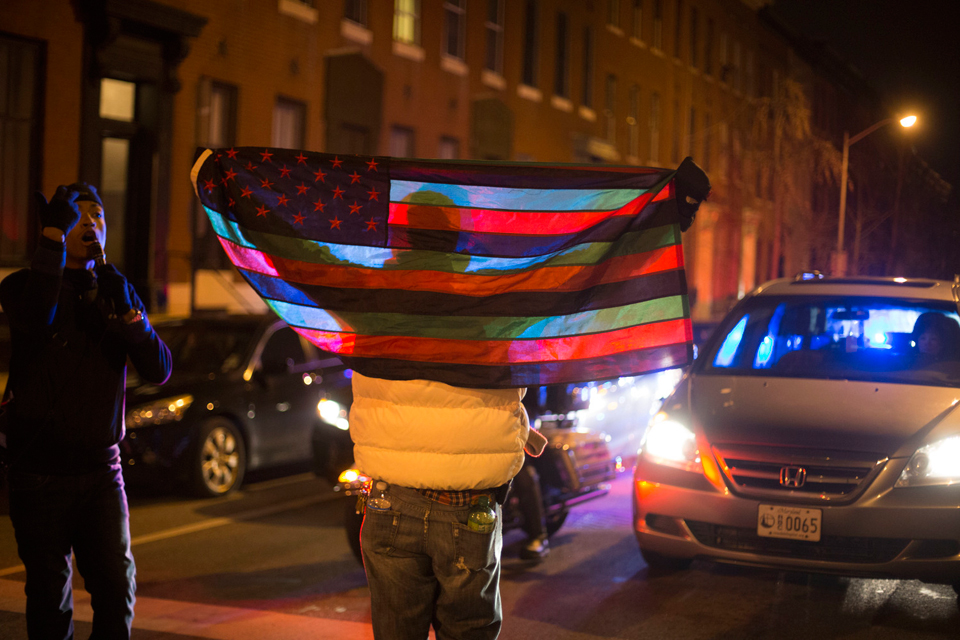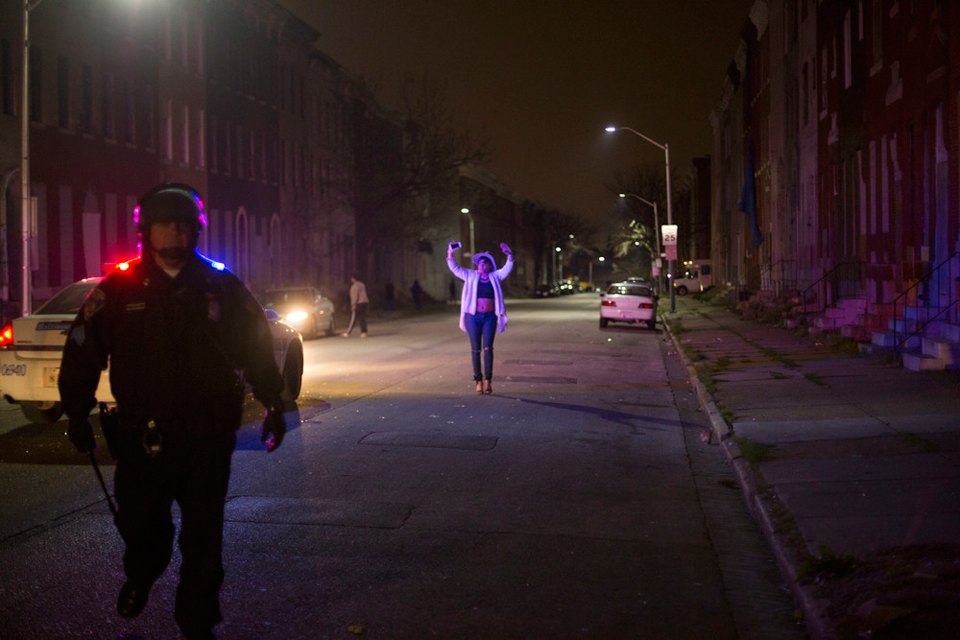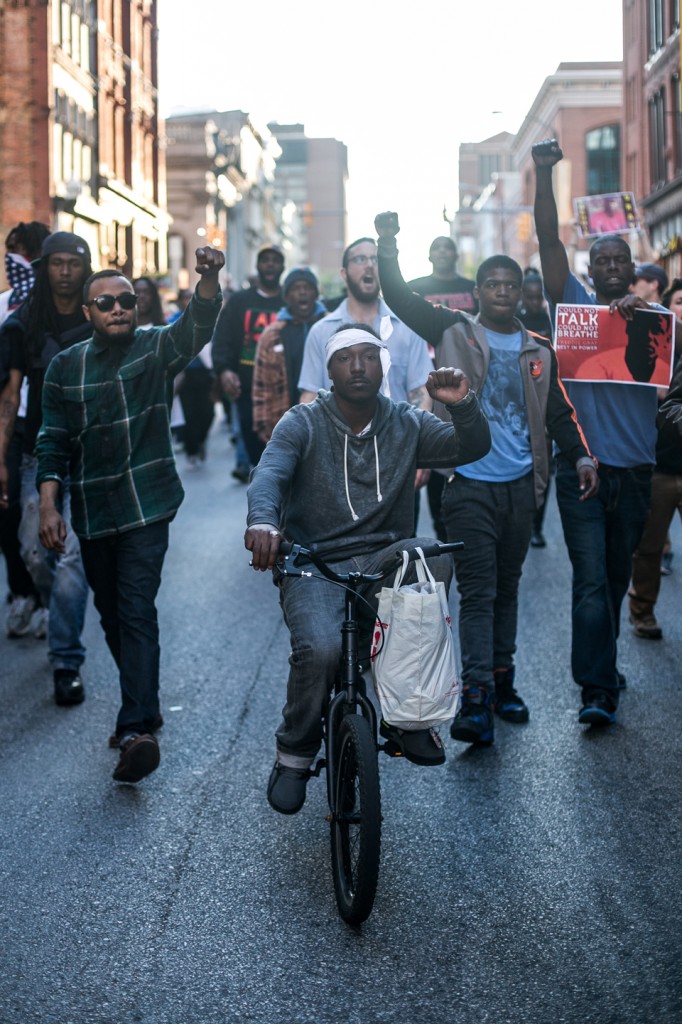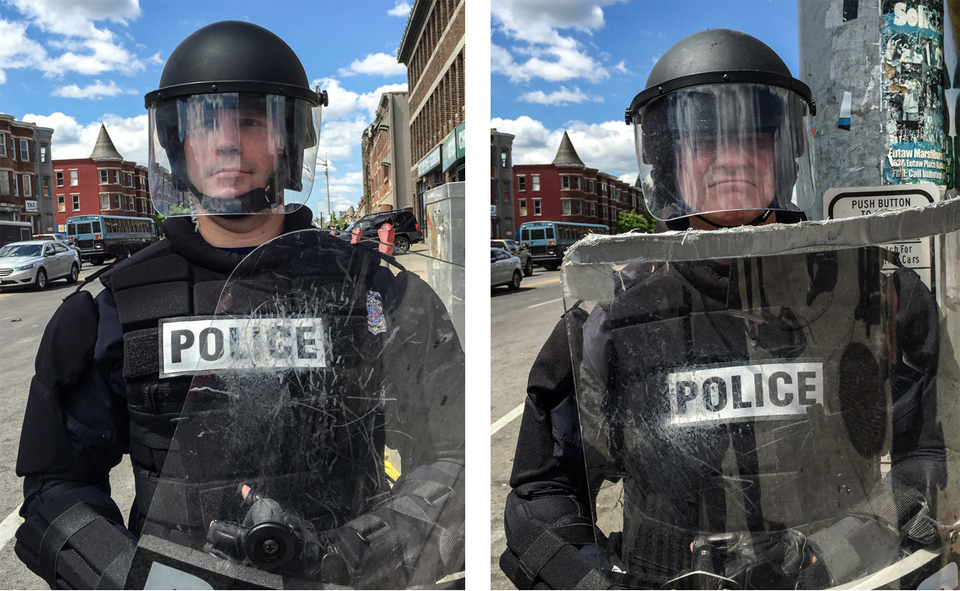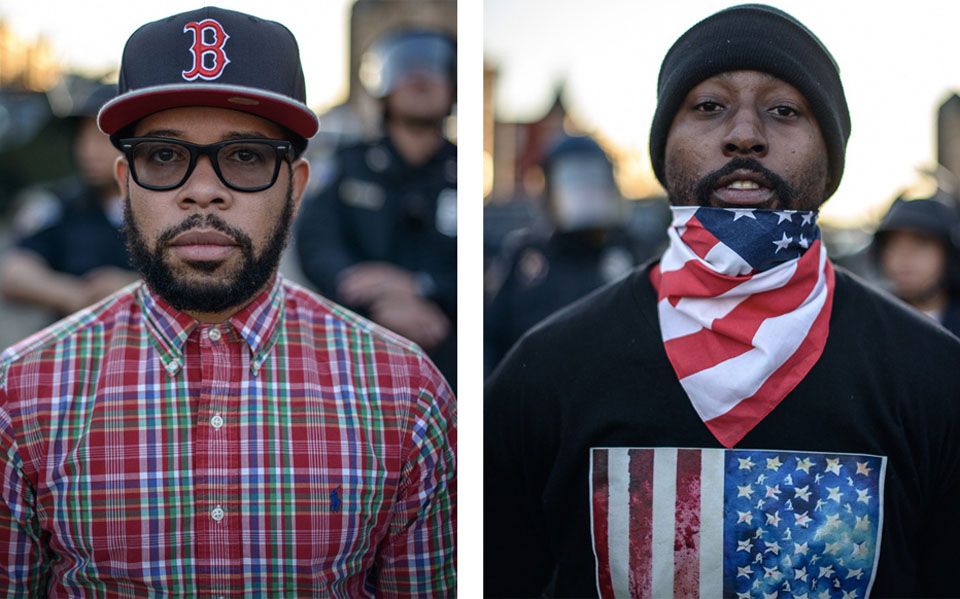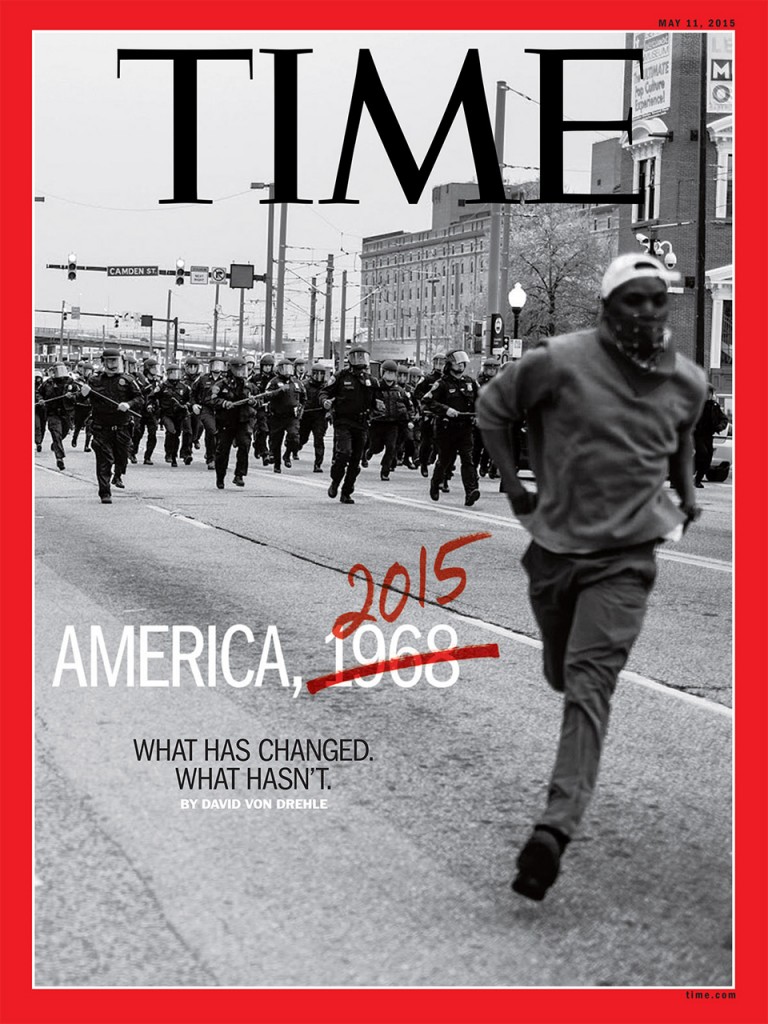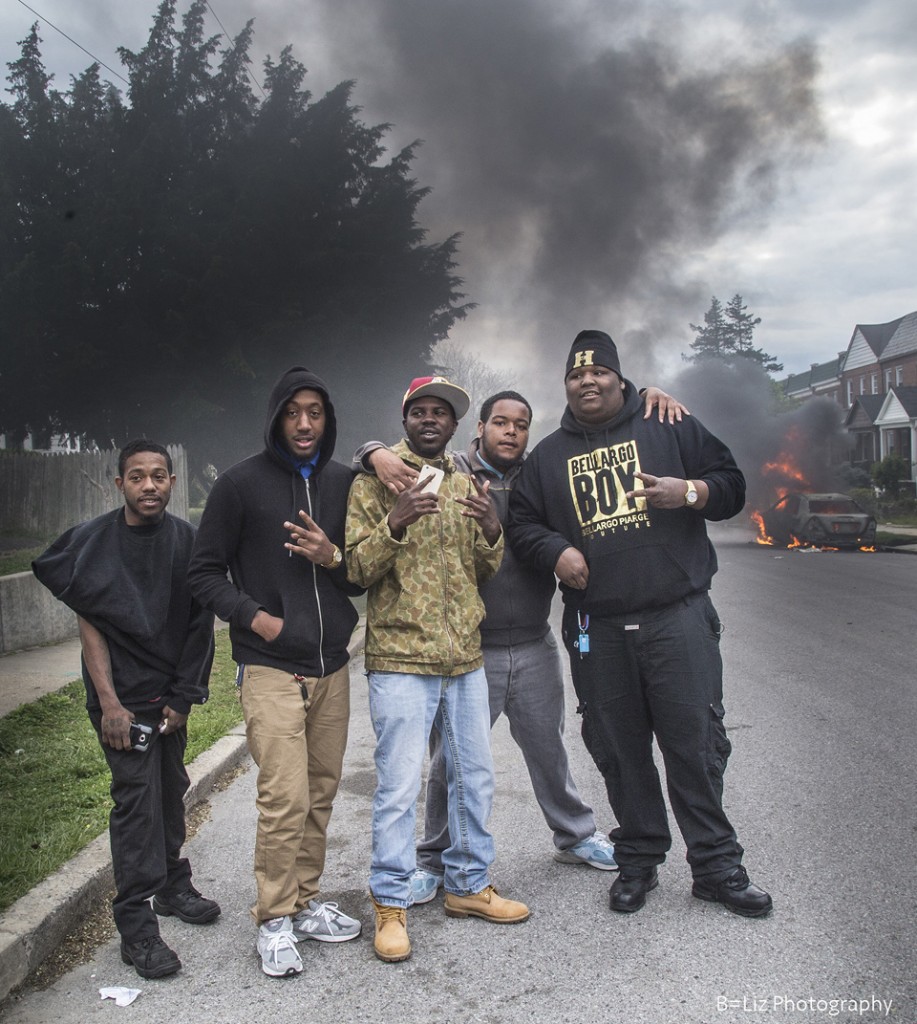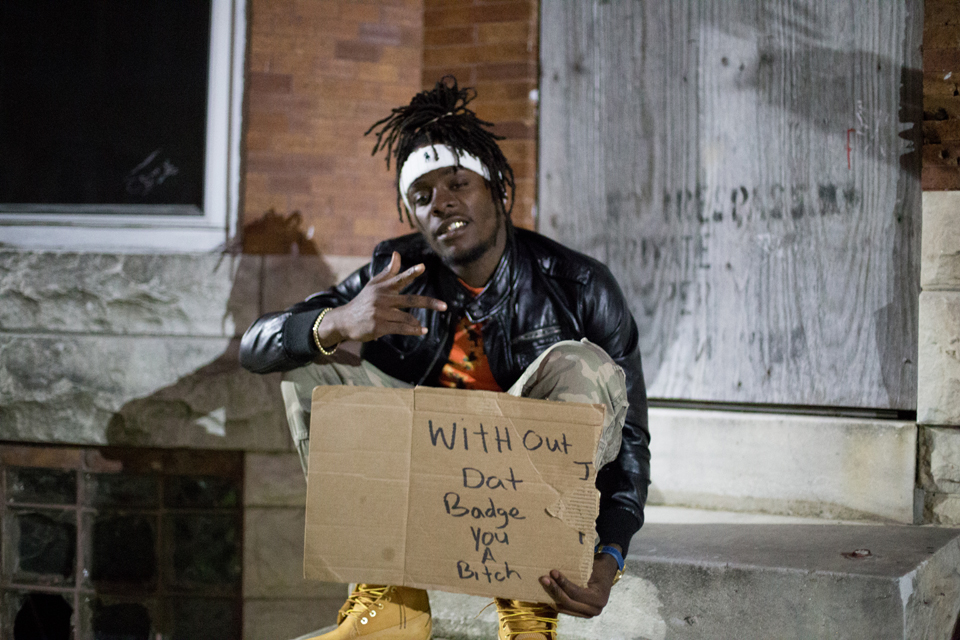Glimpses of an Insurrection
On April 28, 2015, Kwame Rose, a 21 year-old hip hop artist and activist confronted Fox News’ Geraldo Rivera accusing Rivera of exploiting the Baltimore unrest for racist purposes and calling out the network and the media for fetishizing images of burning and looted drugstores while ignoring not only the peaceful marches and community- building dialogs but also the history of segregation and public policy that inevitably leads to disenfranchised neighborhoods all over Baltimore.
The Black Lives Matter movement had been active in Baltimore since the summer of 2014, organizing marches and events in reaction to the murders of Eric Garner in Staten Island in July and Michael Brown in Ferguson Missouri in August. So when Freddie Gray died in police custody after sustaining a severed spine in the back of a police van, weeks of protests erupted. Some violent disturbances led to a state of emergency, followed by occupation by the National Guard, a citywide curfew and international media attention. The swarms of reporters and camera crews set up at ‘hot spots’ in front of boarded-up row homes or the carcasses of fire-gutted police vehicles.
The spectacle of a fiercely focused young African American man righteously confronting the smug grin of a trash journalist was recorded, posted and re-posted thousands of times. In the video we can observe Kwame Rose standing in front of the squirming Rivera “Talk to me, we are not thugs. A black man can raise his voice and you don’t have to be intimidated.” And while Rivera attempts to hide behind his bodyguards Rose continues, “We are the ones who need protection, you work for Fox News!” He then demands that Rivera and Fox News leave Baltimore because they are not reporting about the poverty and boarded up homes but only there for the ‘black riots.’
Superficially this was a confrontation between two individuals but more importantly it was a battle over representations. Kwame Rose was indicting corporate media for not only its complicity in affirming racist stereotypes, yet more insidiously, its instrumental role in constructing a narrative that serves the entrenched interests of power. ‘Look at these animals trashing their own neighborhood’ wasn’t the subtext, it was the explicit message that Fox was tailoring for its audience. CNN was marginally better with Anderson Cooper’s efforts to speak to a variety of Baltimore citizens, yet its cameras were mostly trained on fires and aerial views of ‘marauding’ protesters / gangs.
Baltimore is an intimate place. If you live and work here for any length of time you have crossed paths with just about everyone. If you are interested in Baltimore notables, you can see John Waters driving his Buick around town or having coffee at a corner diner, or chat with the mayor Stephanie Rawlings-Blake in line at the post office. We know each other. We call it “Small-timore.”
This is not to suggest that we live in some kind of secret egalitarian village. Obviously Baltimore, as in much of urban America, is dysfunctional in ways that are deeply structural and will not be solved solely by who we elect as mayor, or president for that matter. But we are fairly united not only in our affectionate loyalty to our city but also for our mostly shared conscious recognition of the contradictions and inequities. There is too much poverty to pretend that everything is OK. We do not have the kind of money to build fancy towers of privilege. One might live on a gentrified street but at the next corner the illusion that the problem is not your own will be challenged.
When outraged citizens began to gather after Freddie Gray’s death, at first in small groups in front of the police station and then marching through the streets as the numbers of protesters grew over the ensuing days, we did not turn to Fox, CNN or the Baltimore Sun, for their distorted offerings filtered through oblivious and ideological ‘reporters’. We turned to Instagram, Twitter and Facebook because our friends, colleagues and family members were participant observers, sending images and texts as things were unfolding.
My stream included images from Josh Sinn, Nate Larson, Audrey Gatewood, and Brittney Elizabeth Williams. All three are Baltimore photographers who were also committed to social justice causes. Through them I linked to other photographers such as Patrick Joust, Zachary Garmoe and the now well-known Devin Allen, whose image of a single protester fleeing a squad of club-yielding police ended up on the cover of Time Magazine. Allen’s dynamic image plugs directly into the image memory of the marches, riots and police viciousness of the Civil Rights era, reminding us, yet again, how little has changed. A self-taught photographer, Devin Allen grew up in the same part of the city where Freddie Gray was raised and was already sharing his images of life on Baltimore streets on Instagram when news of Gray’s death became public. He uploaded his now famous image while in the middle of the protests that day and by evening his photograph had gone viral.
The image of a burning CVS is a dramatic symbol that is instantly readable yet fails to communicate anything of substance. It is ‘riot porn’ – journalistic rhetoric at its most perfunctory, signaling an attack on normality and stability. The image of poor people, black people, looting the store, feeds directly into a pre-existing narrative of uncontrollable primitive hordes attacking civilization. Brittney-Elizabeth Williams, also a Baltimore native, felt it was her duty to take her camera to the marches and rallies as a way to deliberately challenge the narrative the media was constructing. She was not surprised by the rioting and was in some ways inspired by the anger manifesting in such a public manner. She wanted to photograph not only the peaceful marches but also the expressions of outrage, from the inside. “I wanted to capture all of these beautiful black resilient people who are literally standing in the core of destruction and living in a system designed to destroy them, but who still stand tall and proud in spite of all the odds that are against them, and still have faith that the future can be better.”
Predictably, conservatives demean the participants as anti-social rioters and bemoan the threat of anarchy while liberals proclaim the power of peaceful protest. Yet on the street there were moments that felt like something else, something more unruly and powerful – a rebellion. Perhaps this outward expression of rage would be short-lived, but a fury not easily dampened smolders in the bones and sinews of Baltimore’s citizenry. Among the hundreds, if not thousands of photographs taken by Josh Sinn, Audrey Gatewood and Zachary Garmoe, Patrick Joust, Nate Larson and many others that flashed up on smart phones and laptops during the uprising, few relied on the dumb spectacle of things on fire. Instead we see angry challenges to the police and self-appointed peacemakers attempting to defuse confrontation. We can observe the strange and powerful mix of rage and joy in the faces of those who gathered in rivers of humanity flowing through neighborhoods that most outsiders think they know from watching The Wire. These young, mostly unaffiliated photographers are our eyes and through them we can see behind the burning police car to view glimpses of an insurrection.
This essay originally appeared in Dear Dave, Magazine #21.
